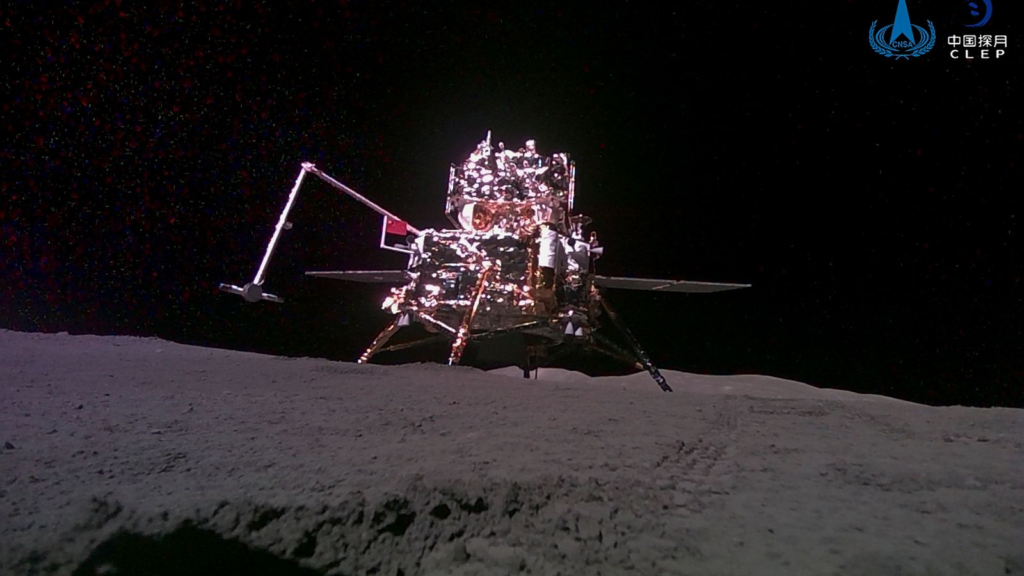China lunar probe has returned to Earth, marking the first time the country has brought back samples from the far side of the moon.
The Chang’e spacecraft re-entry capsule landed in the Inner Mongolia region of northern China at around 2pm Beijing time (7am UK time) carrying lunar soil collected in early June.
Earlier this month, the probe successfully landed in the lunar south pole, in the Aitken Basin, a huge impact crater that always faces away from Earth.
Chinese scientists hope that the samples brought back, which include volcanic rocks and other materials dating back 2.5 million years, will answer questions about the geographical differences between the front and back sides of the moon.
The side of the moon that faces Earth is flatter and has fewer impact craters. The other side always faces space.
Why Earth Always Faces the Same Side
No matter where you are on Earth, people always see the same side of the Moon.
This is because it takes the Moon the same amount of time to rotate on its axis and complete its monthly orbit around Earth.
This phenomenon is called synchronous tidal locking. According to NASA, the Moon initially rotated faster than it does now, but then slowed down and eventually faced Earth the same way it does today.
But the Moon isn’t the only one that synchronizes with Earth.
In fact, the phenomenon is very common. All large moons in the solar system collide with planets due to tidal forces. In some cases, this can happen when stars form binary pairs.
The samples will be transported by air to Beijing, where they will be analyzed by Chinese and foreign scientists, state media CCTV reported.
Chinese President Xi Jinping said the completion of the mission was a “milestone” in China’s ambitions to become a space and science power.

The probe left Earth on May 3 to collect samples that will answer “one of the most fundamental scientific questions in lunar exploration,” according to geologist Zhongyu Yue of the Chinese Academy of Sciences.
“What geological activity is the cause of the disagreement between the two countries?”
China’s Xinhua News Agency previously said that the Aitken Basin – an impact crater 13 kilometers deep and 2,400 kilometers in diameter – is suspected to have formed more than 4 billion years ago.
It is the oldest and largest crater of its kind on the Moon and could provide important information as the initial impact may have released material from deep below the surface.
The mission comes amid an intensifying space race between countries such as China, India, Japan and the United States.
The Chinese government aims to land humans on the Moon by 2030, while the US’s NASA wants to achieve the feat again in September 2026.

